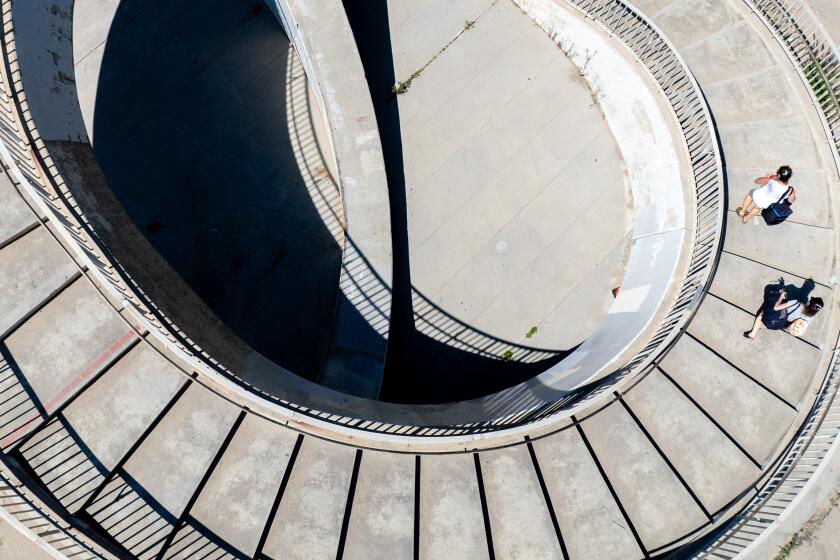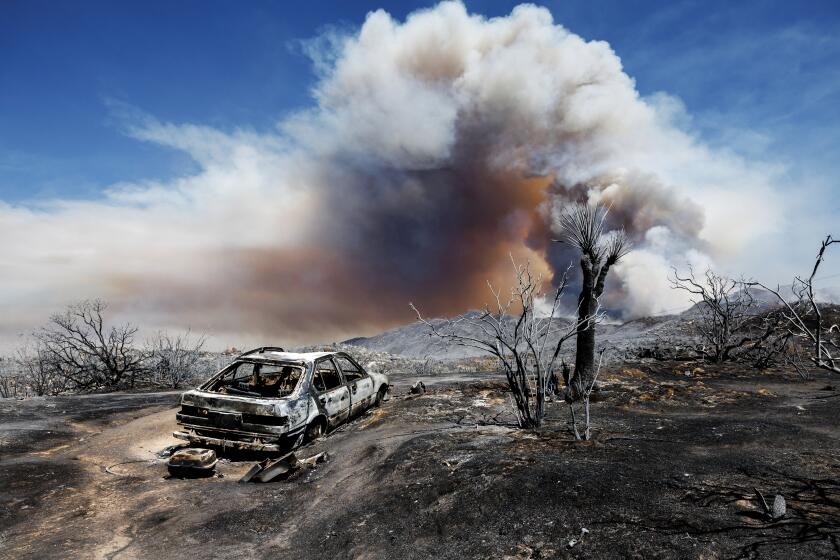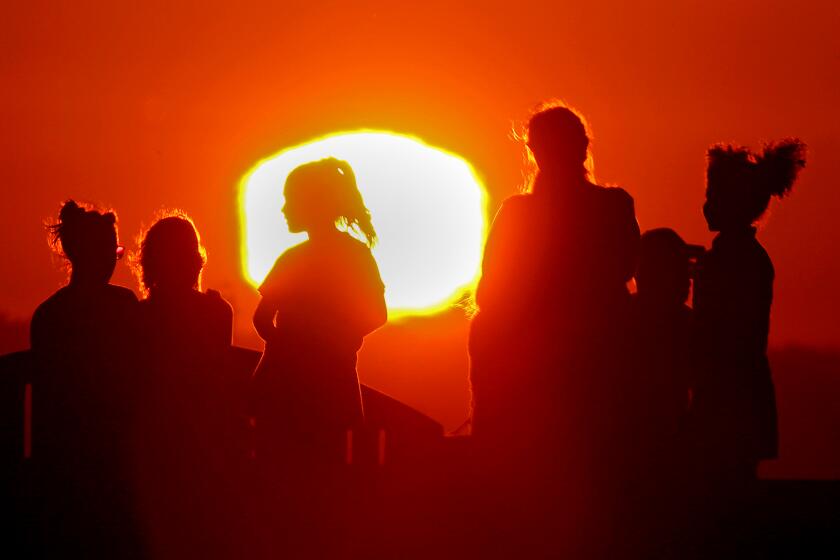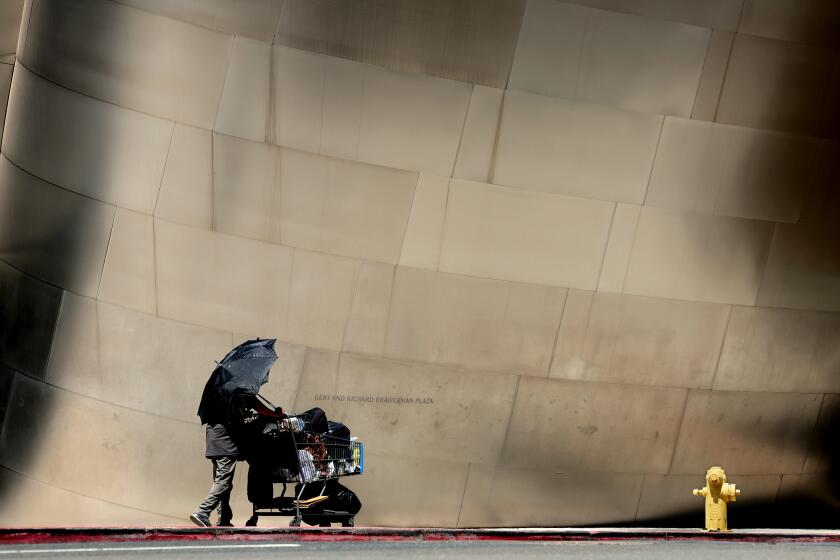Worst of dangerous SoCal heat wave hitting over next few days: What to know
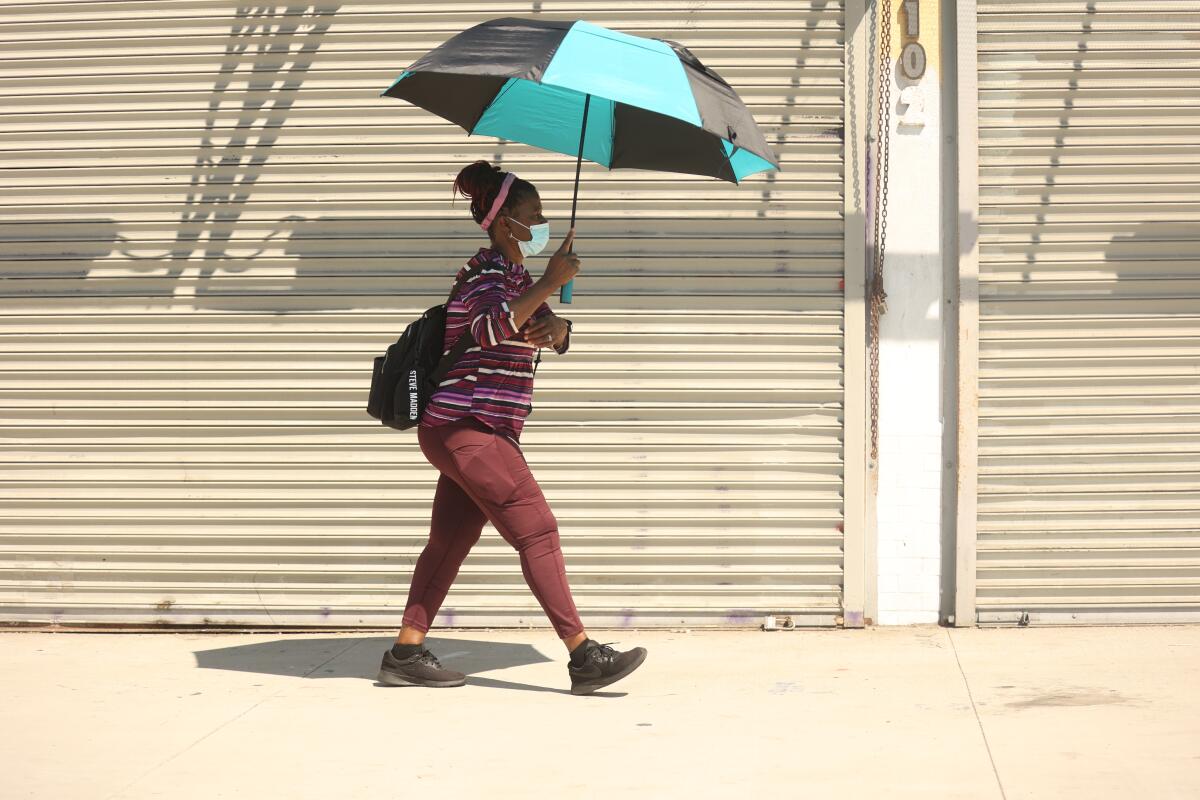
The worst of this week’s heat wave is bearing down on Southern California over the next few days.
Forecast
Meteorologists say temperatures could reach between 110 and 115 degrees in the San Fernando Valley between Wednesday and Friday. Burbank, Woodland Hills, Pasadena, Santa Clarita and Palm Springs could also experience triple-digit temperatures. And downtown Los Angeles is forecast to see temperatures in the mid- to high 90s.
Temperatures in the mid- and high 90s are also expected in Long Beach, said Mike Wofford, a meteorologist with the National Weather Service in Oxnard. Inland Orange County is expected to linger in the 90s and inland swaths of San Diego County could reach up to 102 degrees.
Triple-digit heat is expected elsewhere in the Southland. It could reach 106 degrees in Santa Clarita and 118 degrees in Palm Springs by Thursday. And temperatures in the Inland Empire could be as high as 112 degrees.
A broiling heat wave headed to Southern California this week is expected to bring the region’s hottest temperatures of the summer, according to the National Weather Service.
Warnings
The weather service issued an excessive heat warning from 11 a.m. Wednesday until 8 p.m. Friday for most of Los Angeles County, cautioning the public of peak temperatures reaching 95 to 110 degrees.
Overnight temperatures in the 70s and 80s aren’t expected to bring much relief from the heat.
A heat advisory is in effect from 11 a.m. Thursday through 8 p.m. Friday for the beaches in L.A. County, the Malibu coast and Palos Verdes, according to the weather service. Temperatures of 95 degrees and higher are expected, and residents have been advised to stay away from the beaches.
Timeline
Wednesday: 94 in downtown L.A.; 80 in Santa Barbara; 110 in Woodland Hills
Thursday: 97 in downtown L.A.; 82 in Santa Barbara; 113 in Woodland Hills
Friday: 95 in downtown L.A.; 82 in Santa Barbara; 111 in Woodland Hills
Saturday: 93 in downtown L.A.; 80 in Santa Barbara; 108 in Woodland Hills
Fire risk
Officials also are warning of increased fire danger during the sweltering heat.
There is one the silver lining, though: Santa Ana winds will not accompany the extreme temperatures, reducing the risk of wind-blown, fast-moving wildfires.
California’s average temperature for July was the hottest on record since 1895, according to new data from NOAA.
Safety
Los Angeles Mayor Karen Bass announced this week that hundreds of cooling centers will be open through Friday across L.A., including “climate stations” on Skid Row where people will have access to shade, seating and cold beverages.
Residents can find a list of cooling centers and “climate stations” online.
Staying hydrated
Drinking more water than you’re used to, and drinking it before you’re thirsty, will help keep you hydrated. If you’re outdoors and sweating, the standard is to drink two to four cups of water — or about 16 to 32 ounces — every hour.
Dr. Fausto Farfan, chief of emergency services at Kaiser Permanente Woodland Hills Medical Center, also suggested adding electrolytes to water or drinking sports drinks to help your body replenish the salt and minerals you lose from sweating.
One way to tell if you’re sufficiently hydrated is to pay attention to your urine. If it’s dark yellow or brownish, it’s a sign you need to drink more fluids.
“Usually, the rule of thumb is that if you’re staying well hydrated, your urine should be a light yellow color,” Farfan said. And if you’re urinating less than normal, it’s probably time to drink up.
Heat-related illnesses can range from sunburns and heat rashes to more dangerous conditions such as heat exhaustion and heatstroke, according to the U.S. Centers for Disease Control and Prevention.
California’s first heat wave of the year could last into next week. Here are some tips on how to stay safe and cool during hot weather.
Know the symptoms of heat-related illness
Signs of heatstroke, the most serious of all heat-related illnesses, include a body temperature of 103 degrees or higher; a fast, strong heart pulse; hot, red, dry or damp skin; headache; dizziness; nausea; confusion; and passing out. If you or someone you know is experiencing these symptoms, seek medical attention right away. In the meantime, the CDC says to move to a cooler place and to lower your body temperature with cool cloths or a cool bath, but don’t drink anything.
According to the CDC, signs of heat exhaustion include heavy sweating; cold, pale and clammy skin; a fast, weak heart pulse; nausea or vomiting; muscle cramps; tiredness or weakness; dizziness; headache; and passing out. If you have these symptoms, move to a cool area; loosen your clothes; put cool, wet clothes on your body or take a cool shower; and sip water.
Get medical help right away if you’re throwing up, your symptoms get worse or if they last for more than an hour.
Protect the most vulnerable
Children, pets, the elderly, unhoused residents, pregnant people and those with chronic health conditions are more vulnerable to heat-related illnesses.
Farfan said they’ll mostly require the same safeguards as everyone else, but it’s important to check in on them, “sort of like a buddy system to keep an eye on them in case they don’t realize that they’re starting to overheat.”
If you notice they’re flushed, sweating excessively, having a harder time moving around or exhibiting other symptoms of heat-related illnesses, get them some water and help them move to a cooler place.
And never leave a child or pet in a car. Temperatures can quickly skyrocket, even with windows cracked.
A heat wave is forecast to bring temperatures of up to 119 degrees to Southern California this week, with scorching conditions peaking Thursday and Friday.
Stay informed
Angelenos can sign up for extreme heat alerts through the city’s website. You also can check your area’s forecast on the National Weather Service’s website, and find weather watches, warnings and advisories for California and beyond on the National Oceanic and Atmospheric Administration’s website.
Other tips for staying cool
- Eat foods with a high water content, such as watermelon and cucumbers, but limit or avoid sugary, alcoholic and caffeinated drinks.
- Wear loose, light-colored clothing and hats for protection.
- Keep pets indoors, if possible. If you have to keep them outside, make sure they have plenty of shade and water.
- Take a cold shower.
- If possible, avoid using your stove, oven or other appliances that generate heat.
More to Read
Sign up for Essential California
The most important California stories and recommendations in your inbox every morning.
You may occasionally receive promotional content from the Los Angeles Times.
